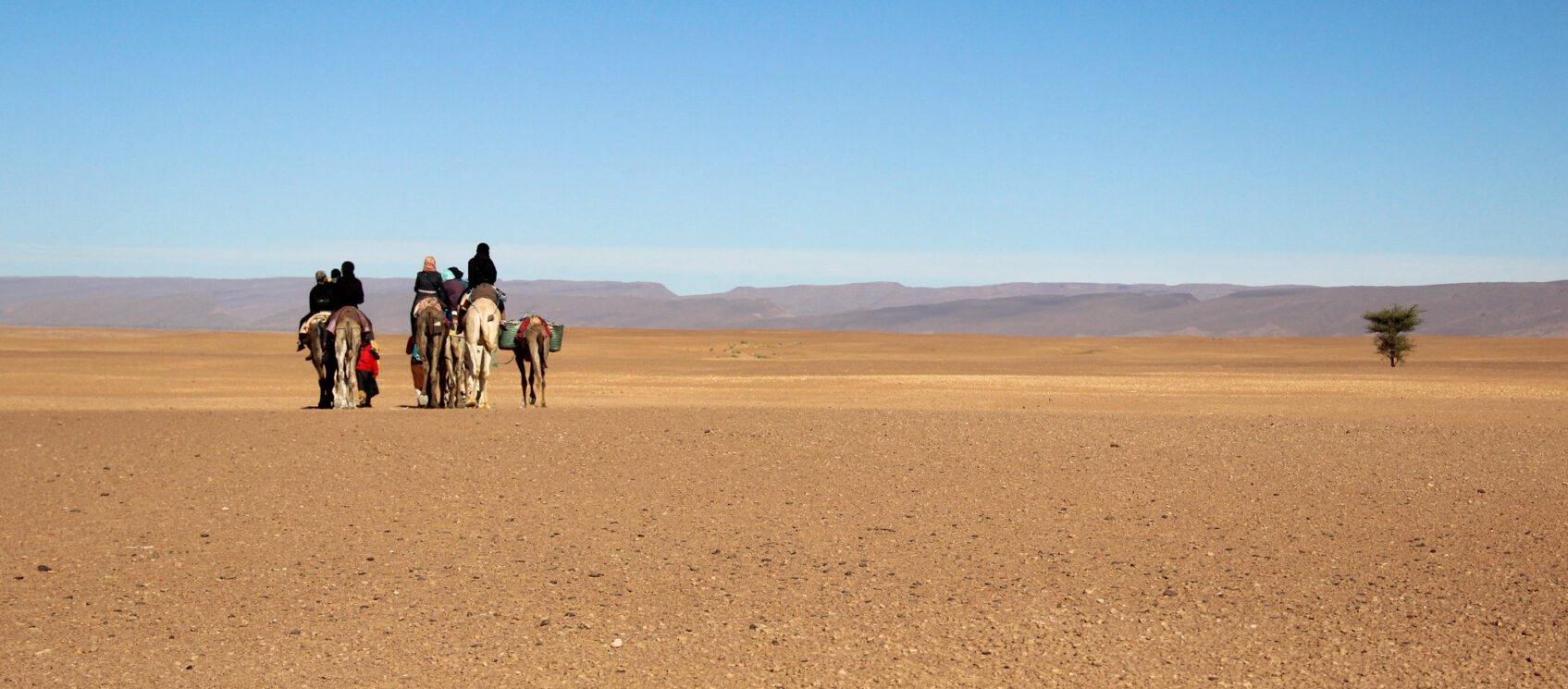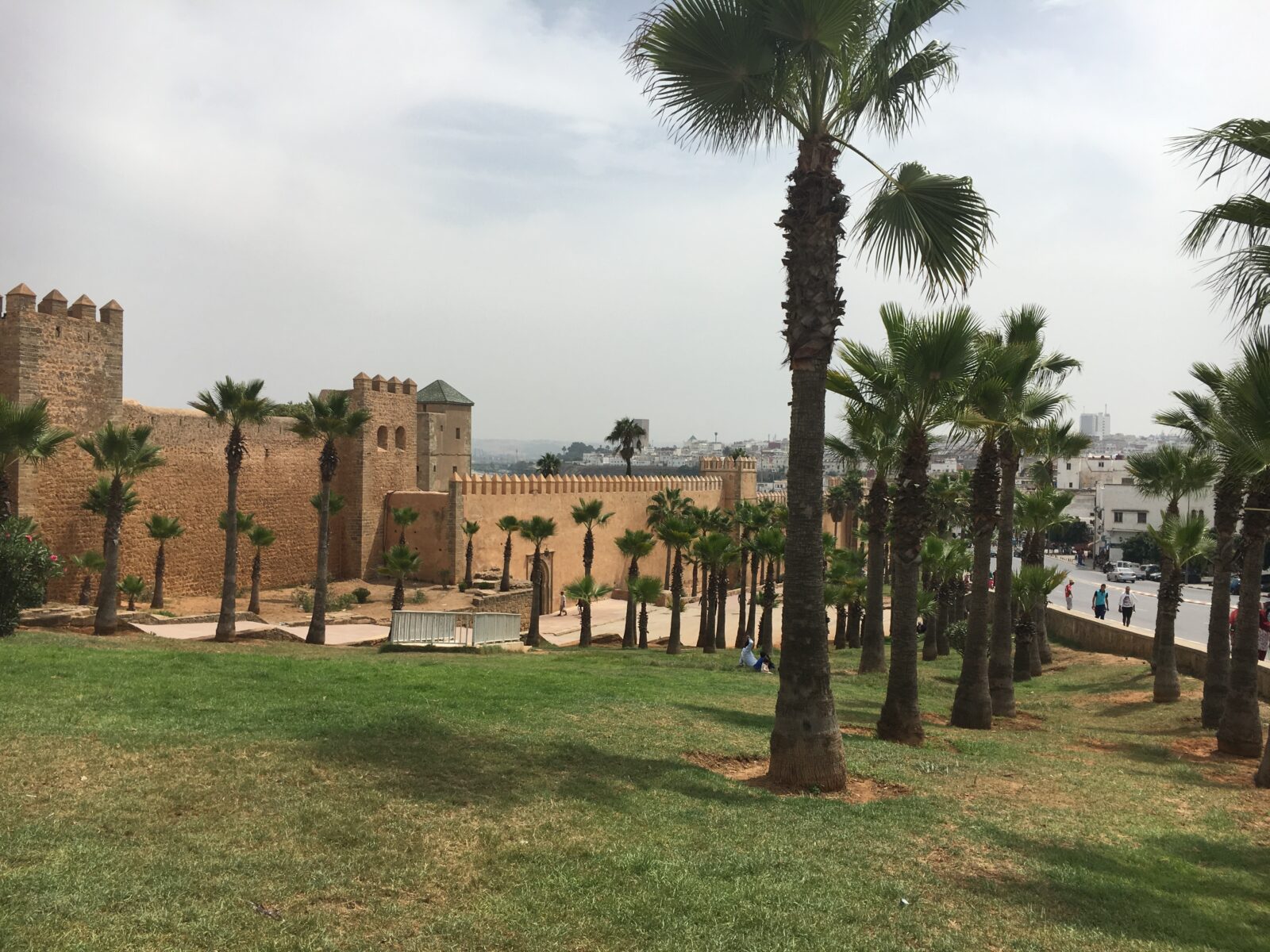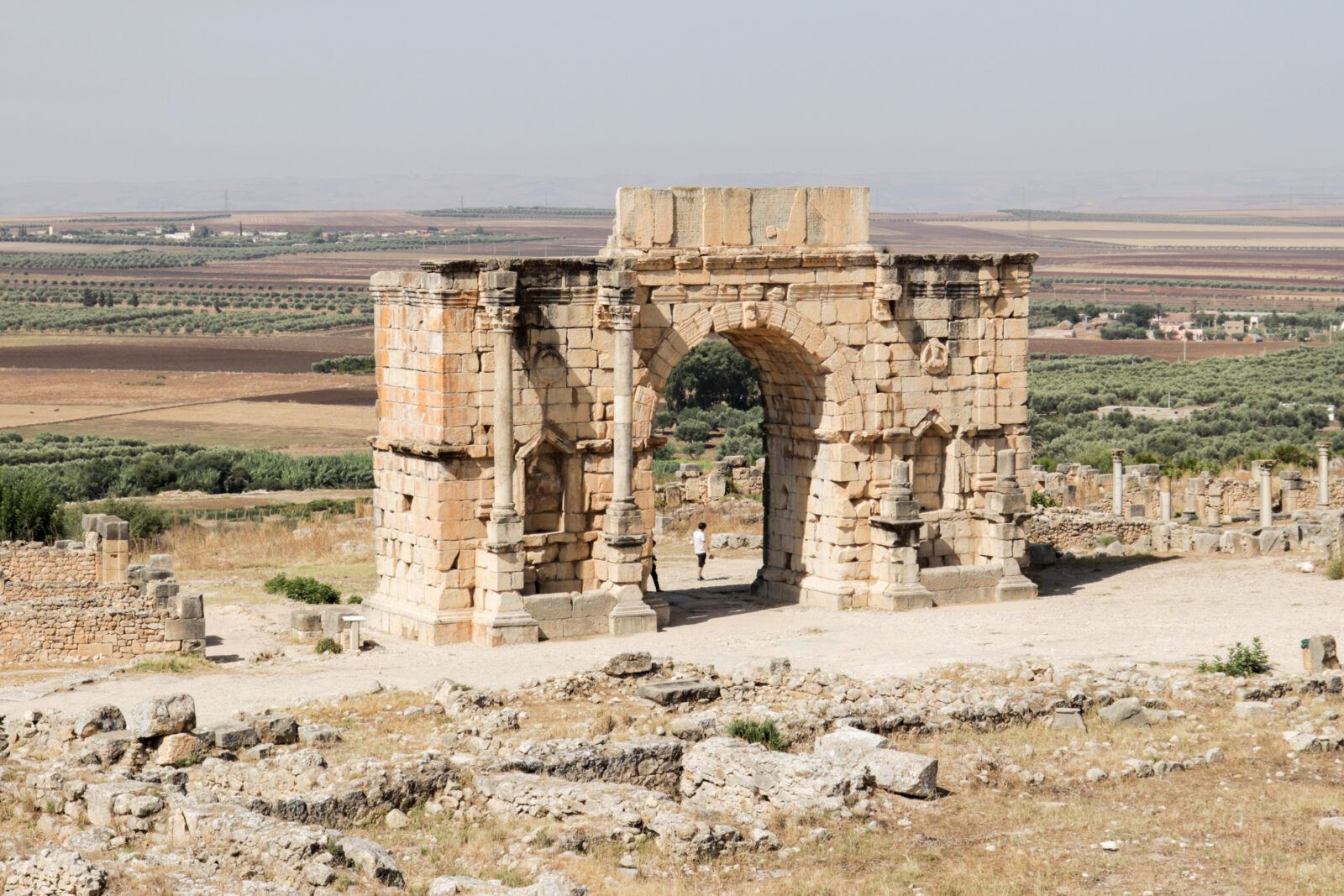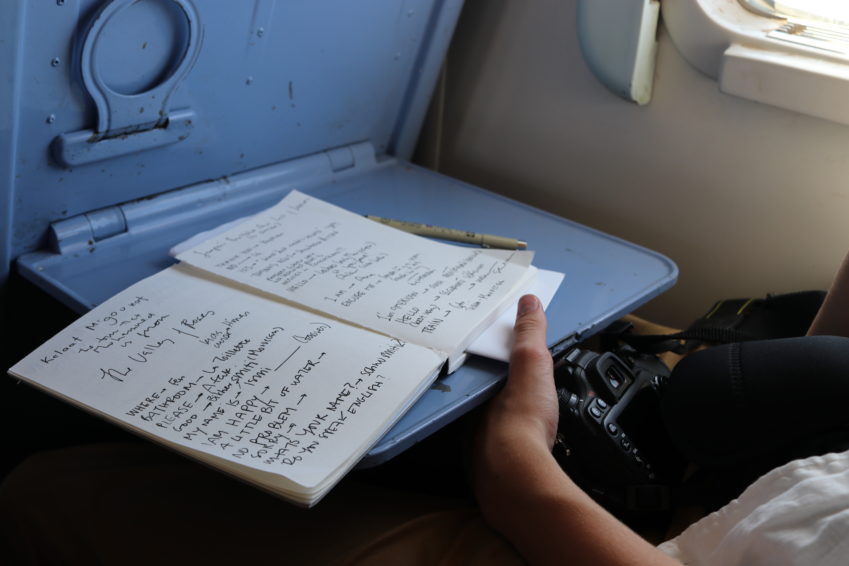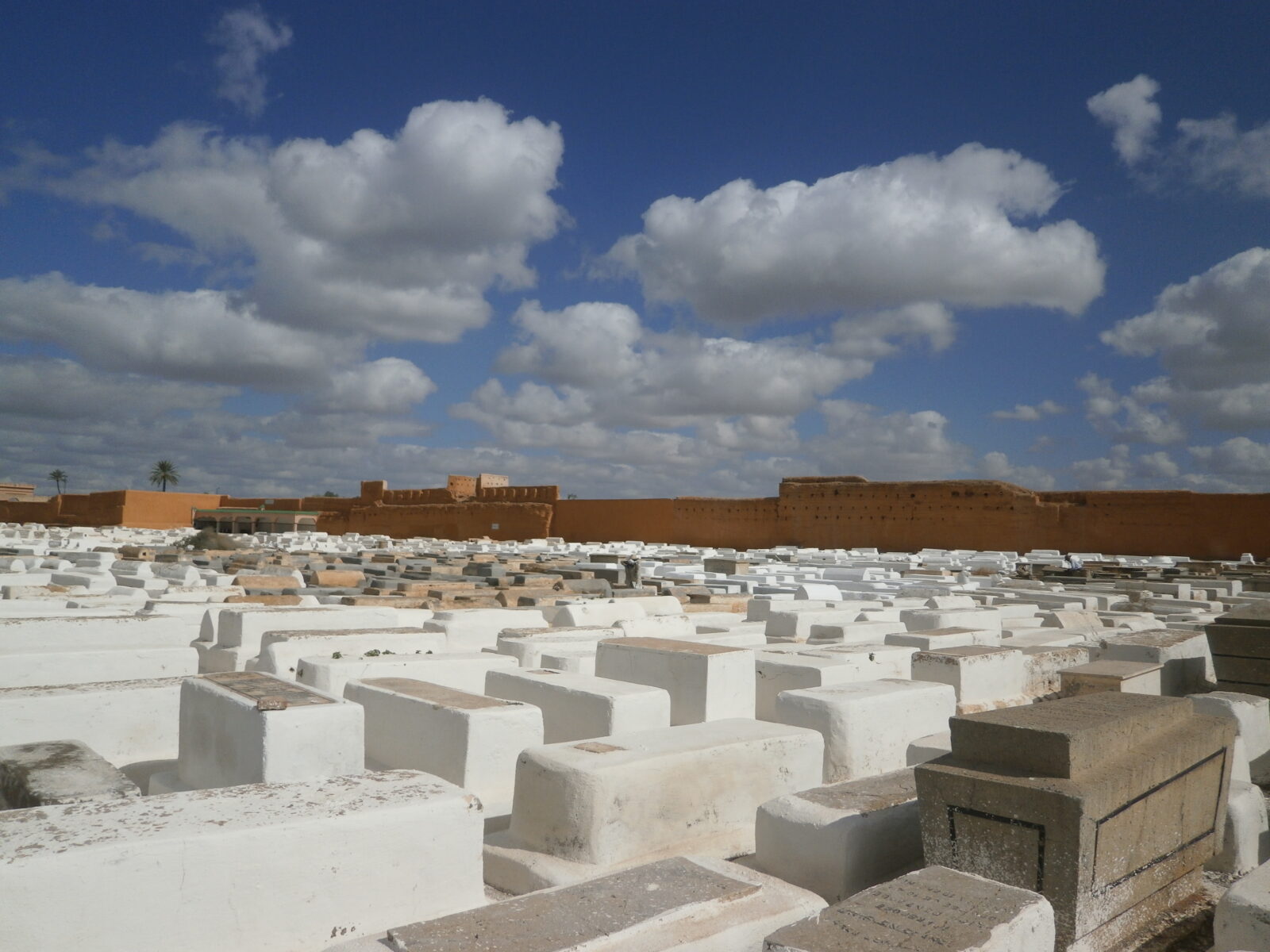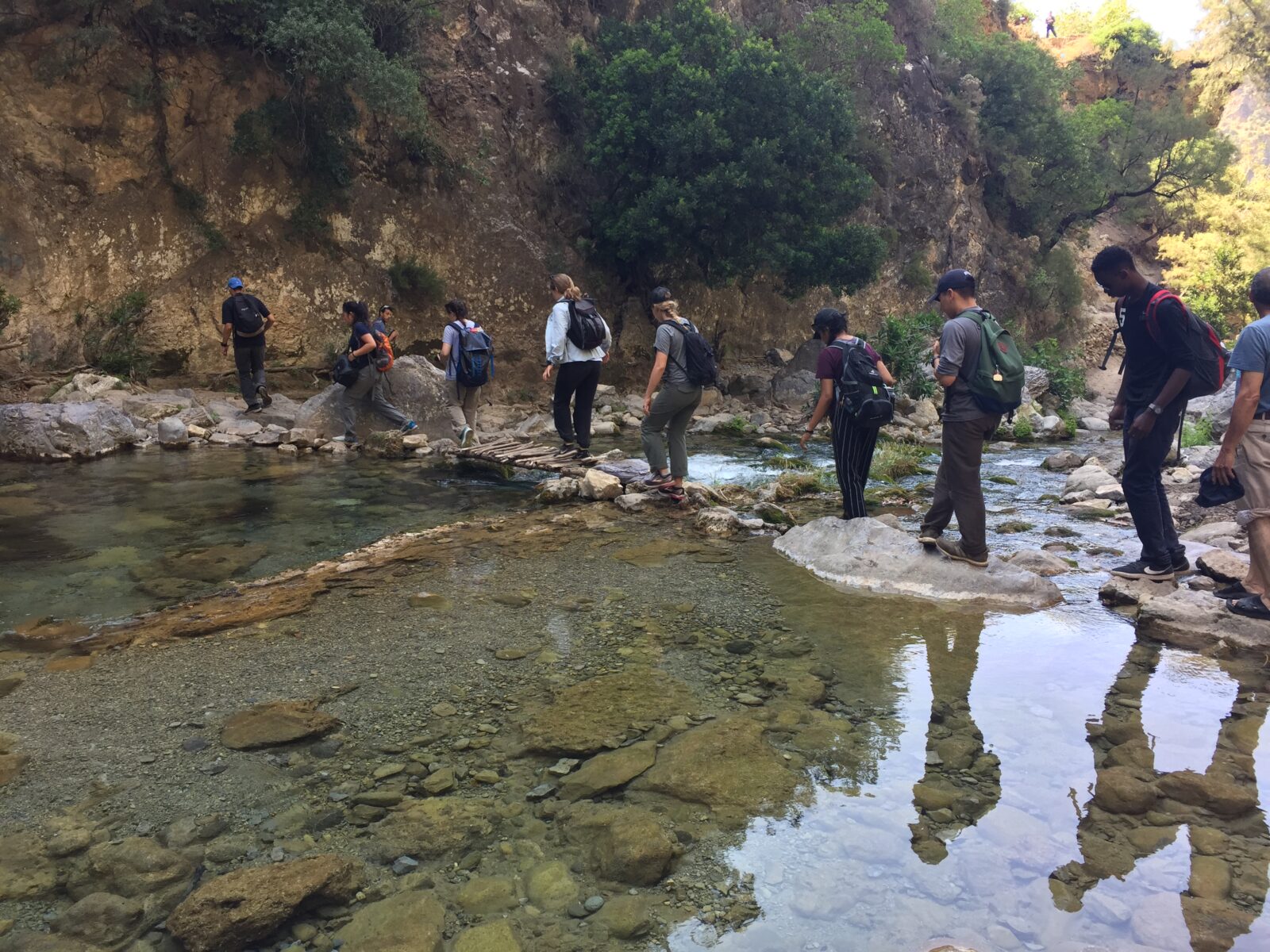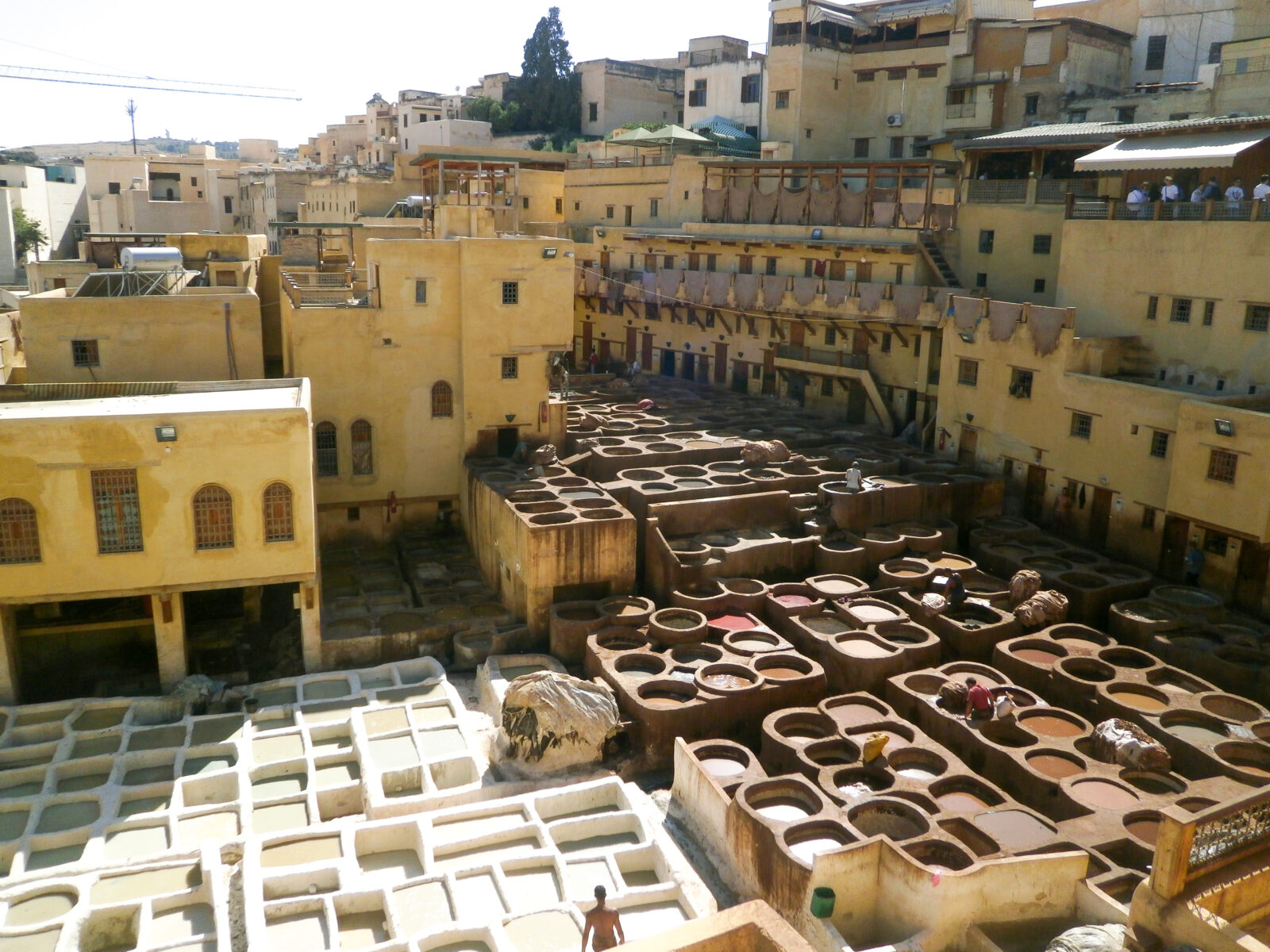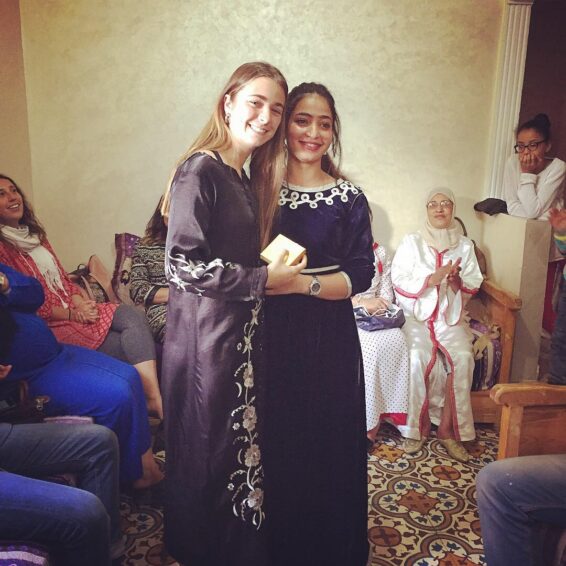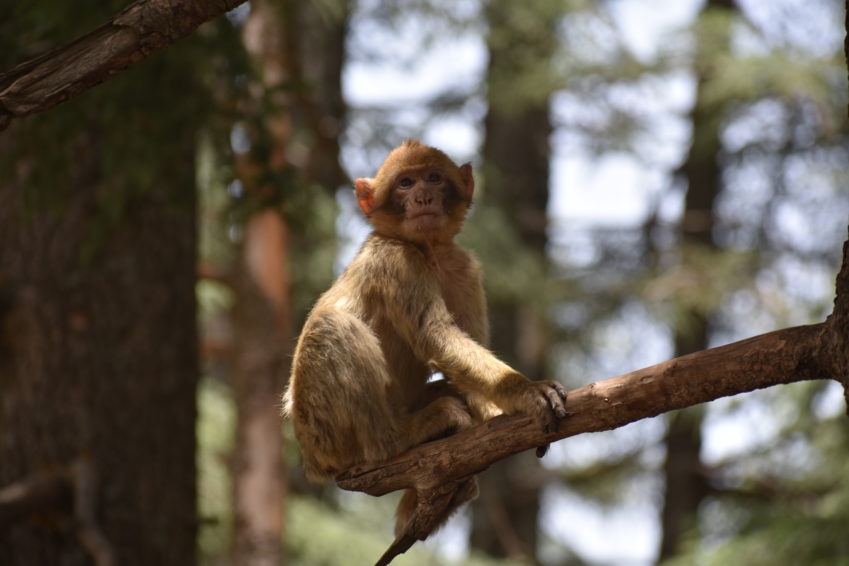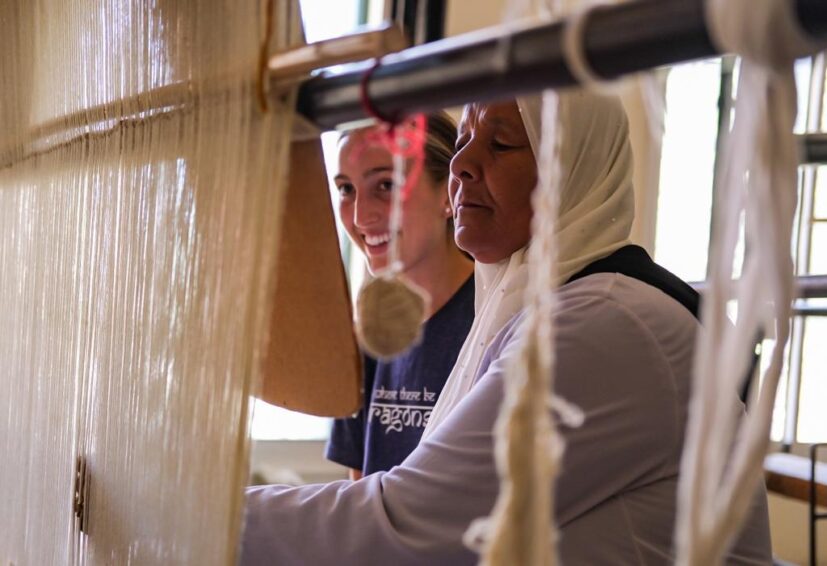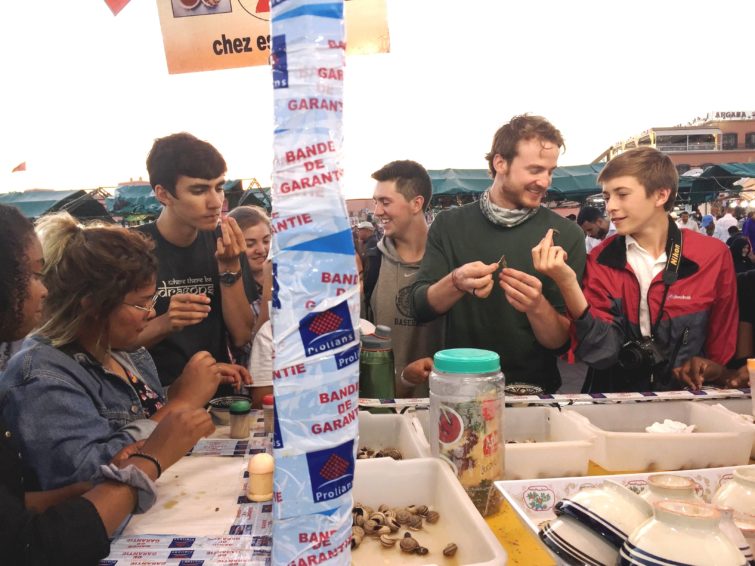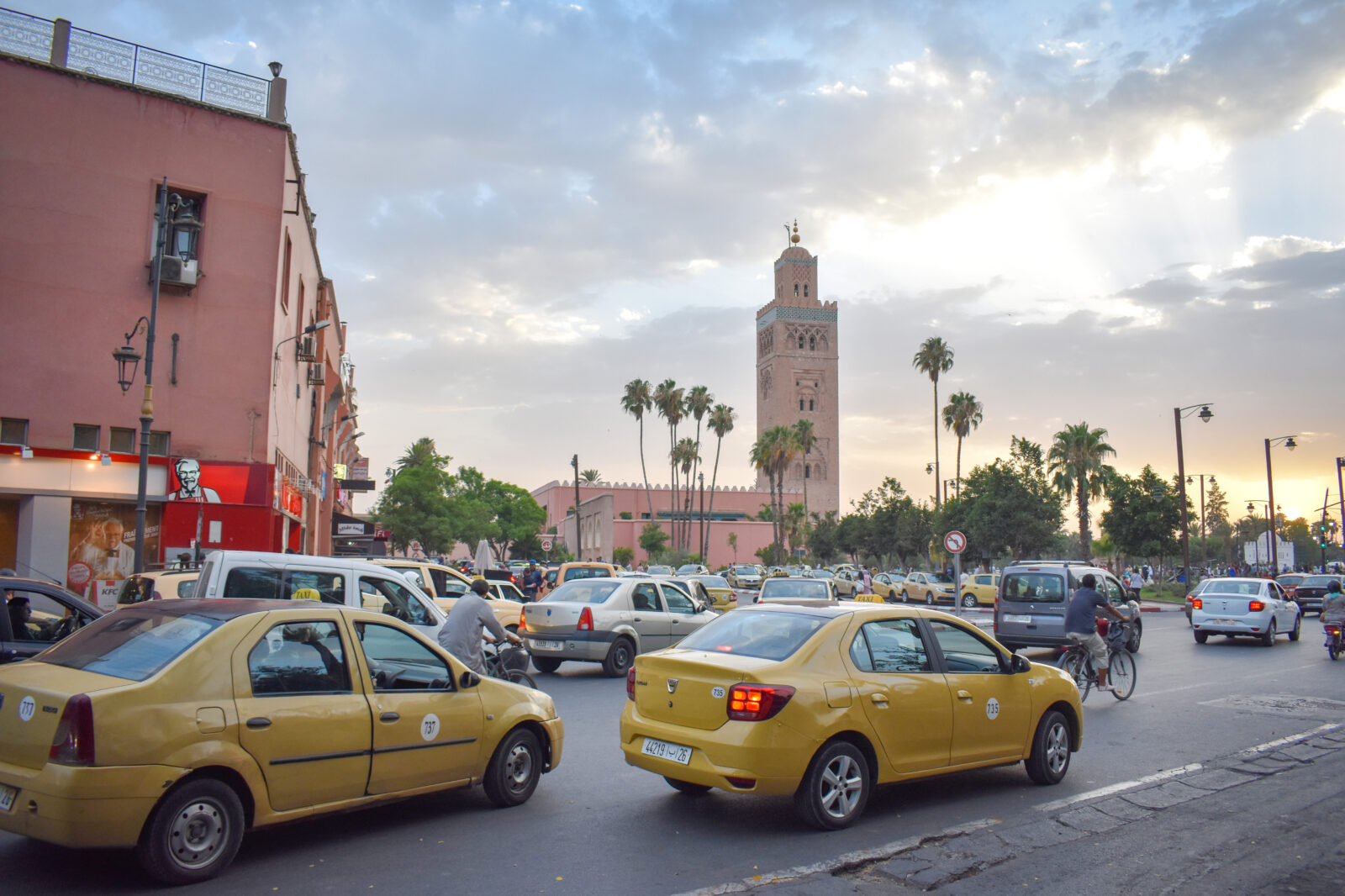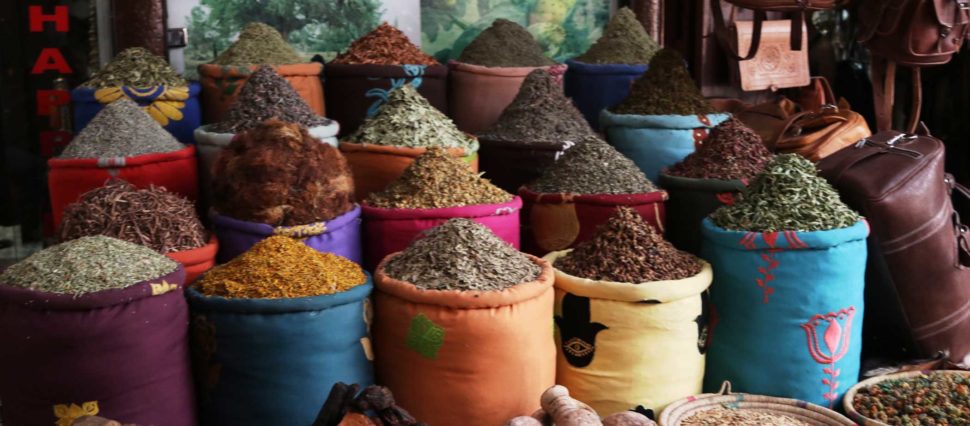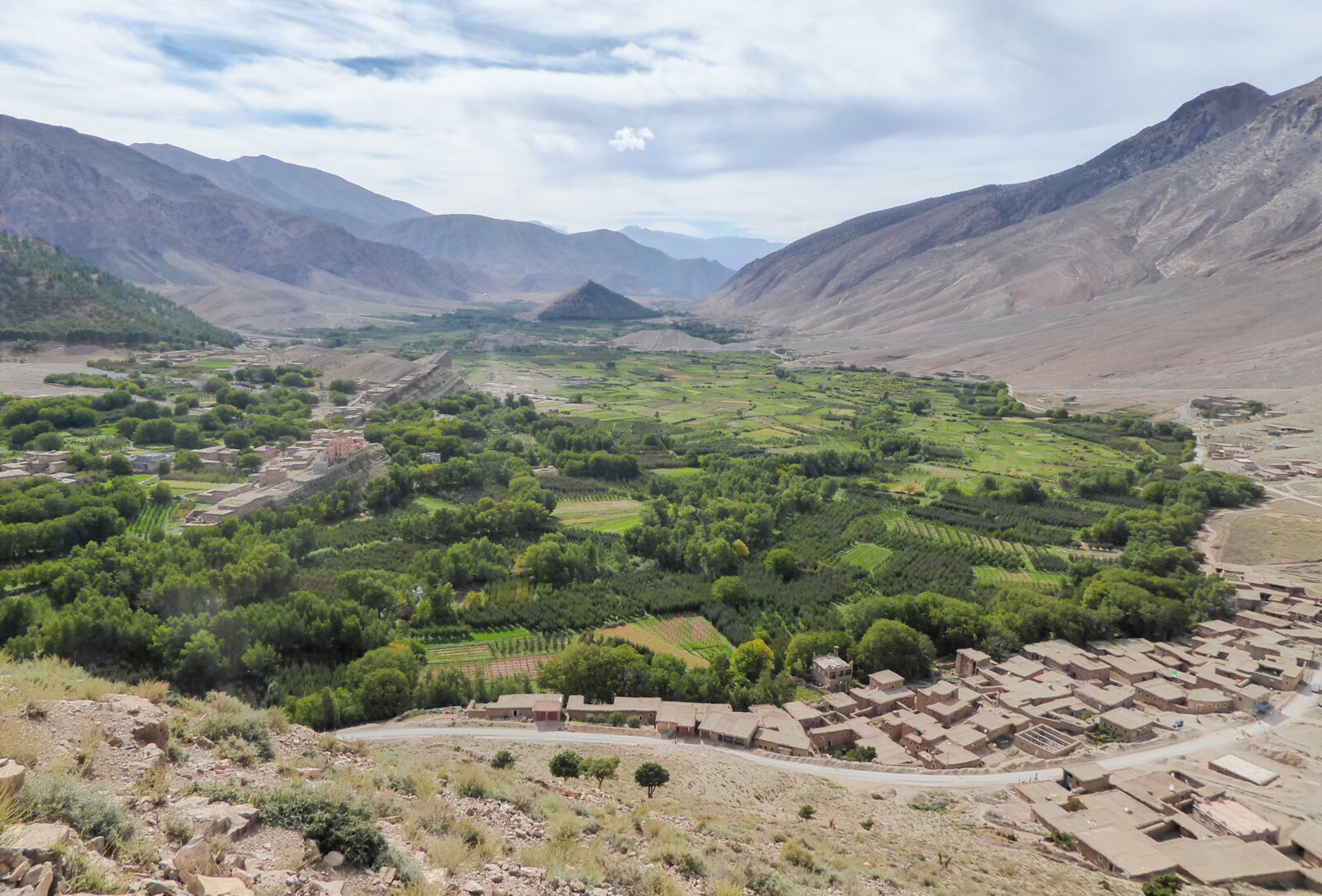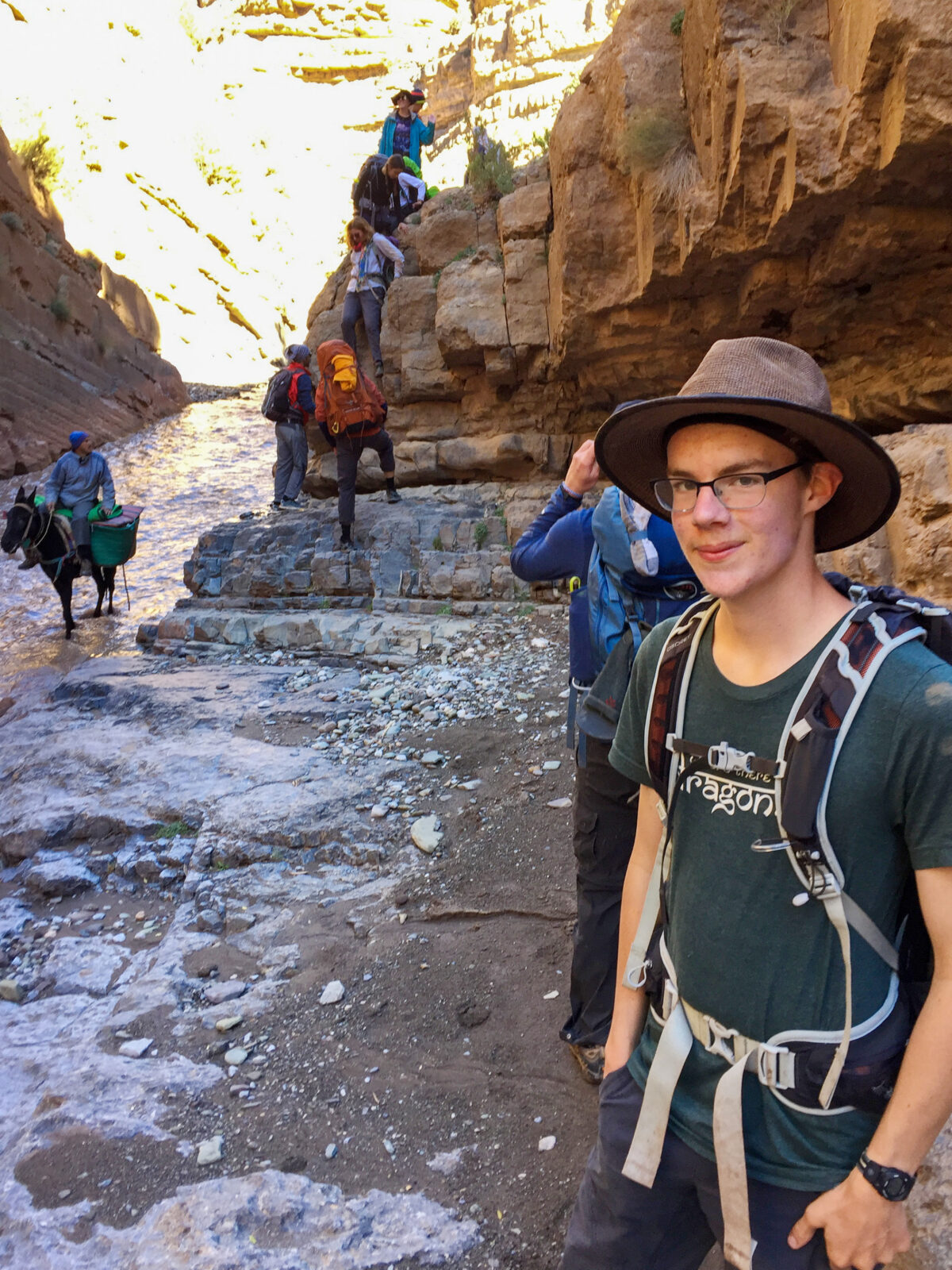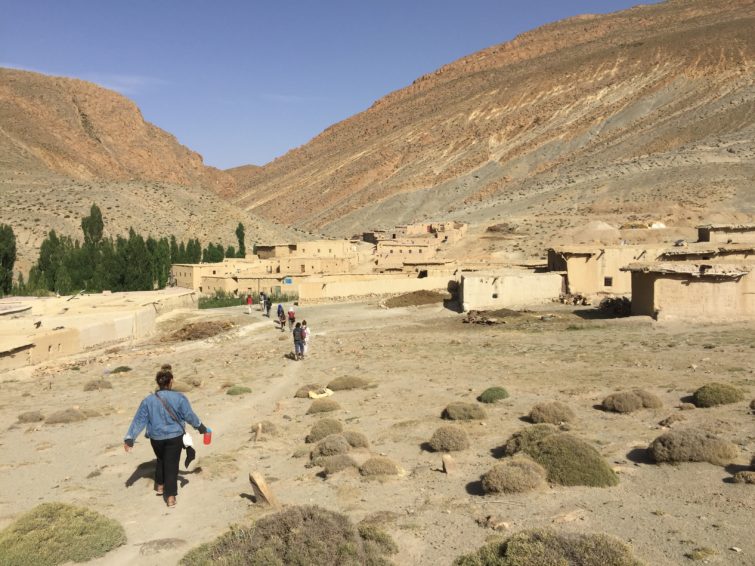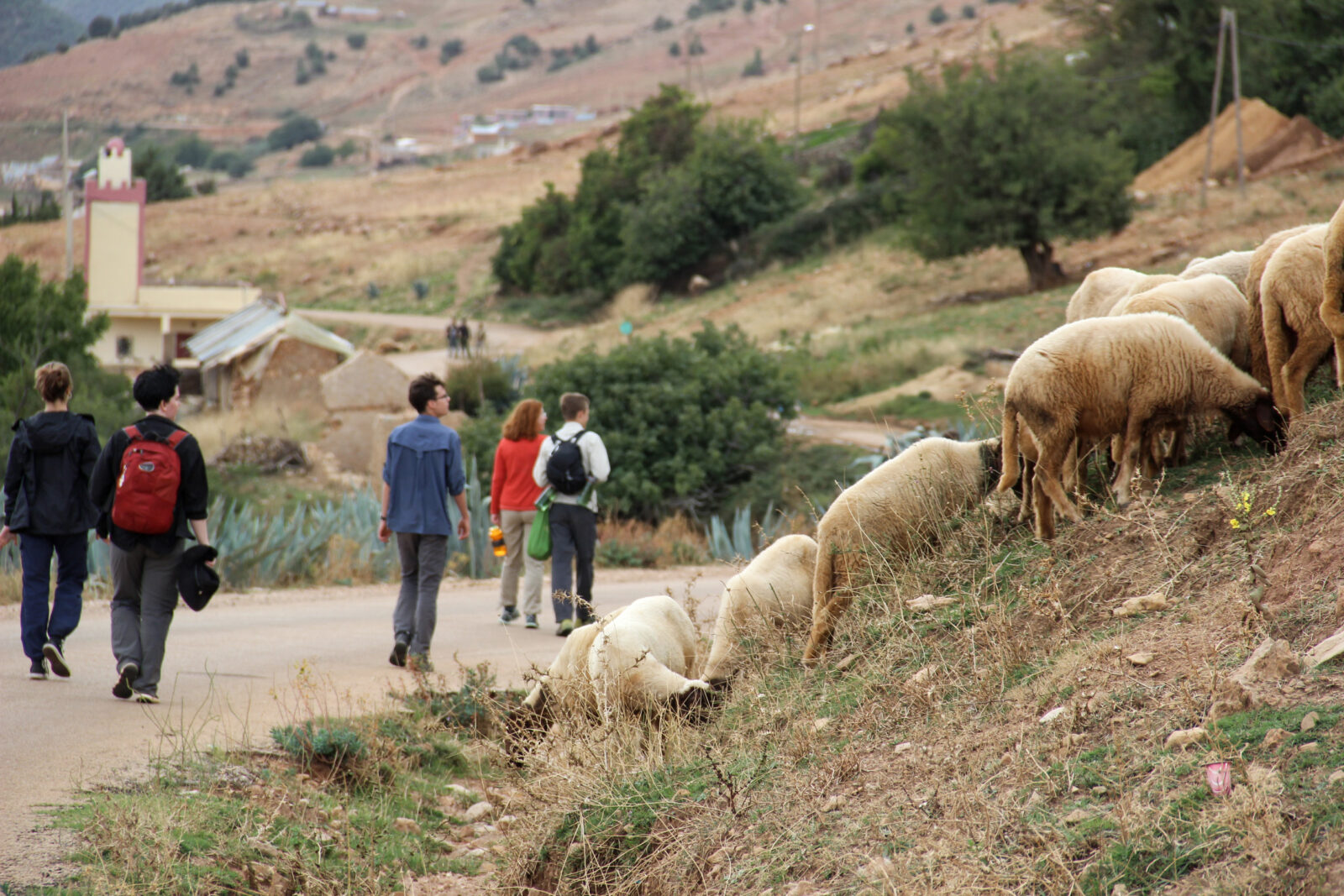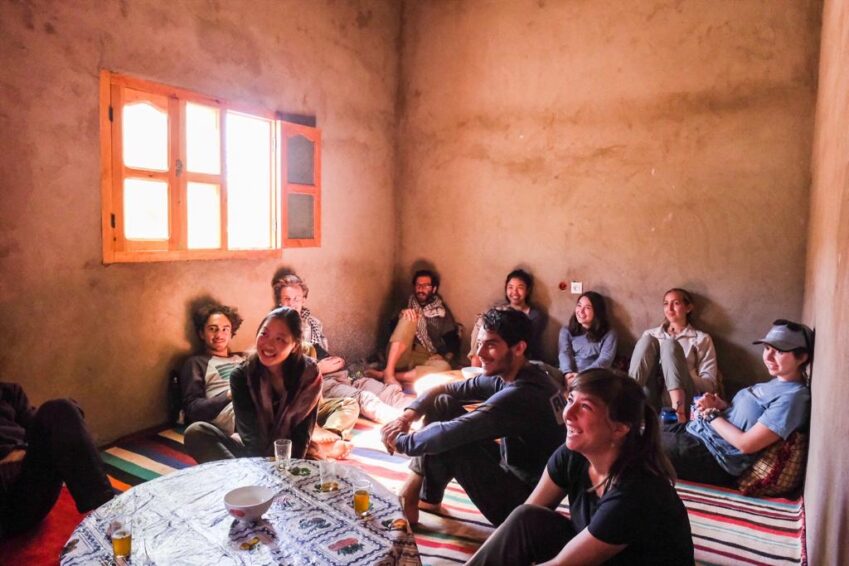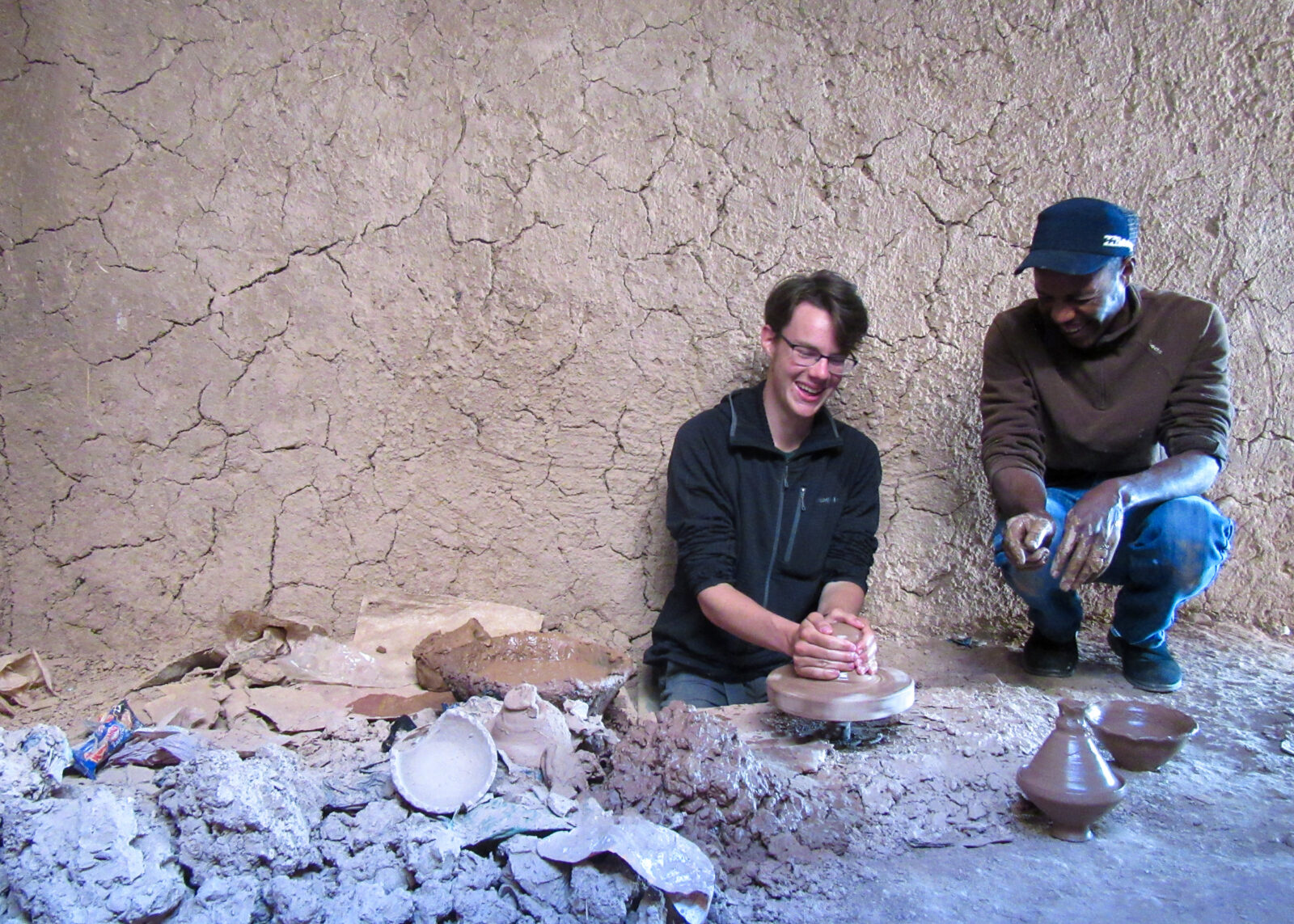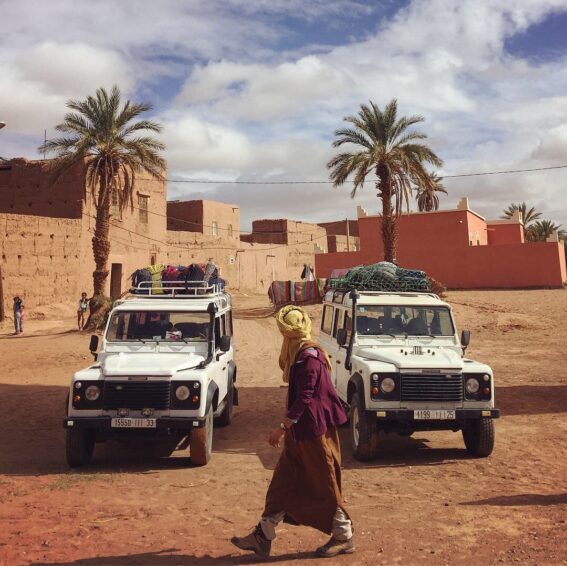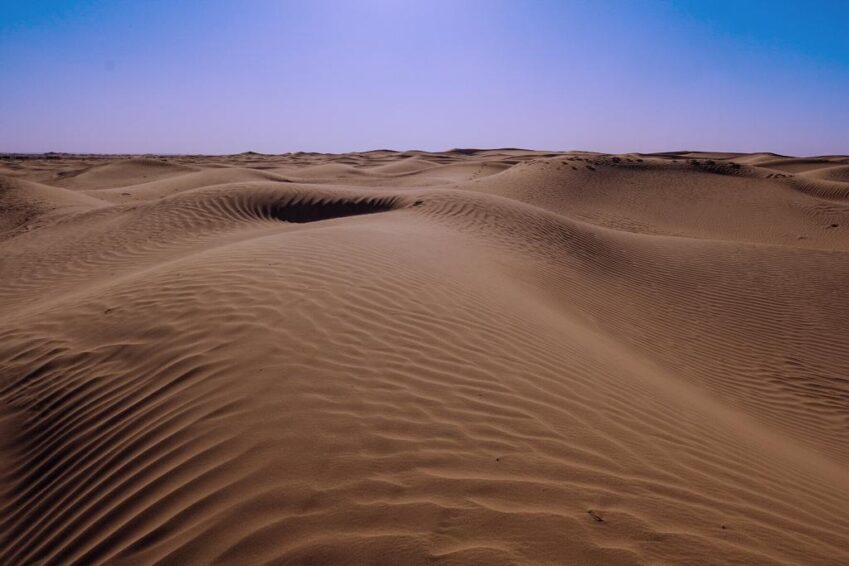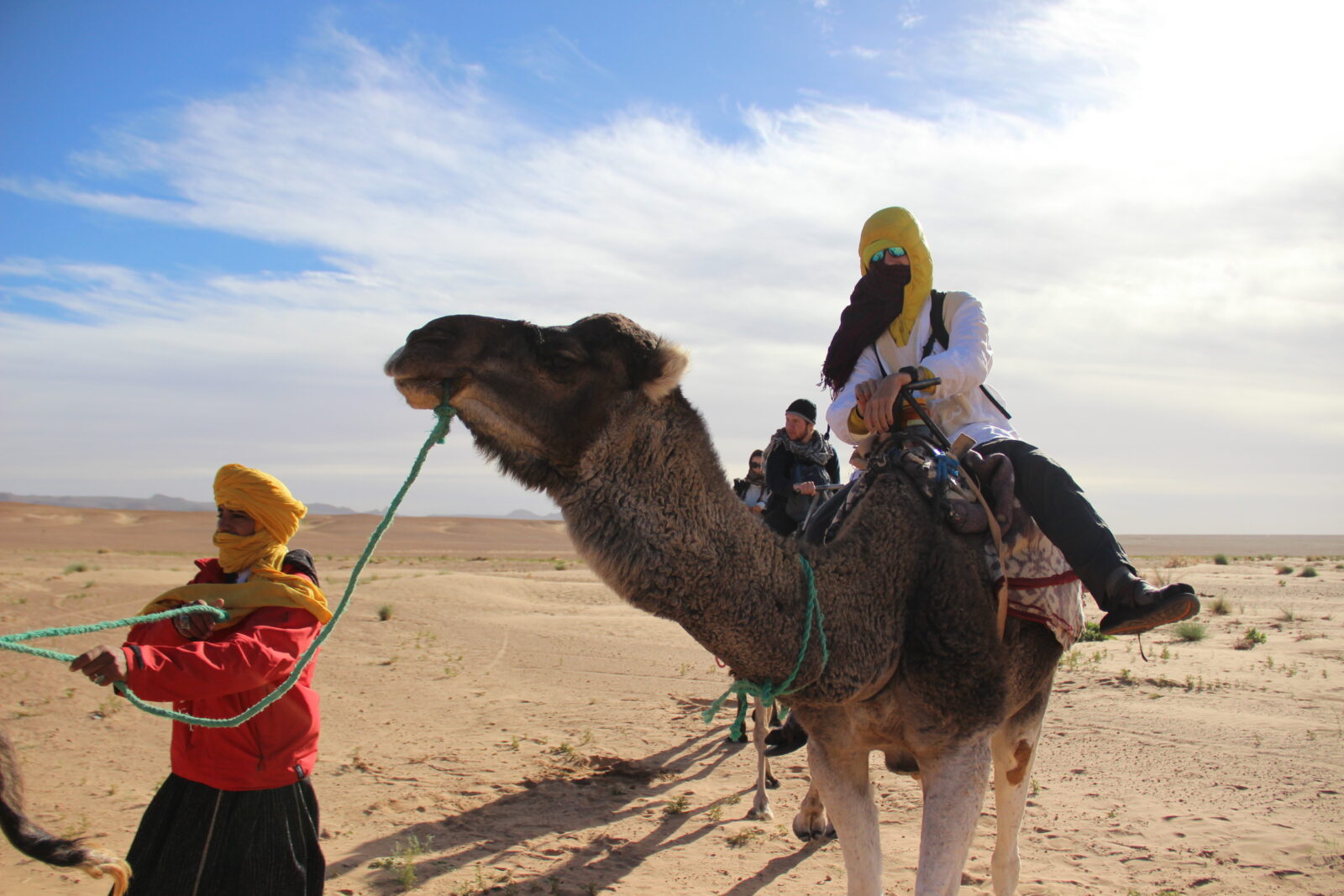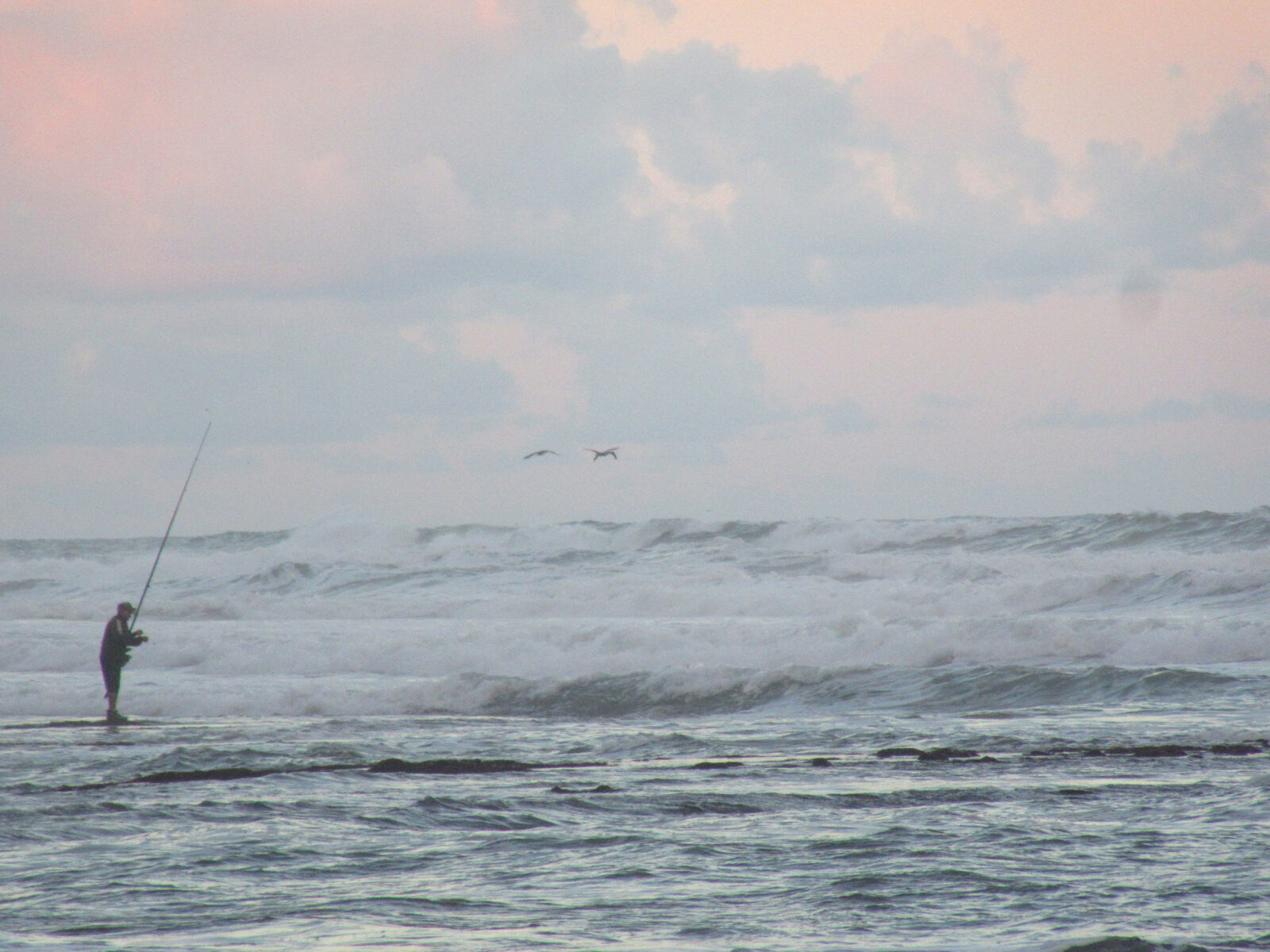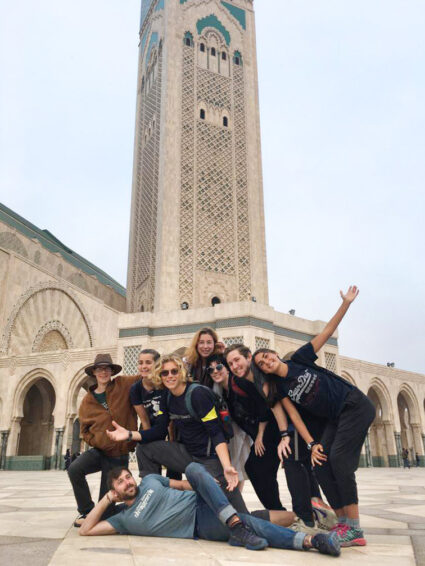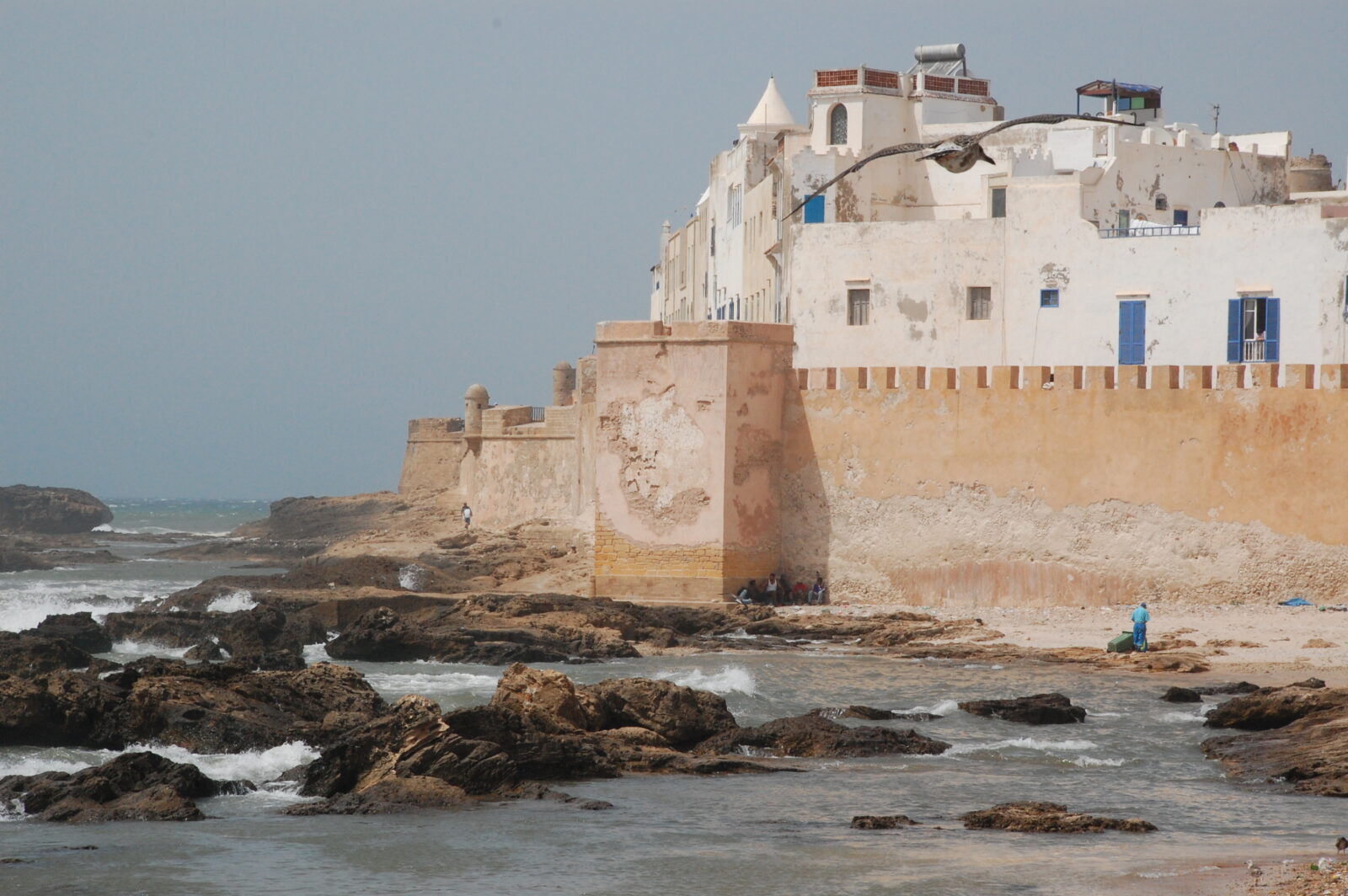Morocco Semester, Sample Itinerary
-
Week 1
After traversing the Atlantic Ocean, we arrive in Casablanca, stay one night in the country’s capital of Rabat, and then transfer to the small town of Moulay Idriss Zerhoun outside of the cities of Meknes and Fez for orientation. This beautiful area holds a special place in the heart of the Moroccan people because it was here that Moulay Idriss I arrived in 789 to bring the new religion of Islam and a new dynasty to the area. In this place, we prepare for our three months together in Morocco. We begin Arabic language study, receive an introduction to Moroccan cultural norms, get to know each-other, set our intentions for the course, and explore the surrounding area. -
Week 2
Following our orientation, we embark on our first short trek. For a few days, we hike in the Middle Atlas Mountains in order to solidify our group and begin to function as a cohesive unit. We then travel to the city of Fez to see the religious sites and massive medina (old city), now a UNESCO World Heritage Site. Fez teems with superlatives. Not only is Fez's medieval city the largest car-free urban area in the world, but it is also home to the oldest existing, continually operating educational institution on the planet. We explore the medina, wending our way along the labyrinthine passageways to experience the diversity of the souqs (markets). We visit centuries-old tanneries, walk among crumbling ruins, and practice our bargaining skills. We begin to explore options for Independent Study Projects (ISPs), hear from guest speakers about topics of development, religion, and artistic preservation. Depending on timing, we may visit the baths in nearby Moulay Yacoub, a destination for Moroccans looking for the healing powers of sulfur water. -
Week 3-5
Next, we travel to the quaint semi-urban Amazigh (Berber) town of Azrou (translated to mean “Great Rock”) which is surrounded by the cedar forests of the Middle Atlas Mountains. Here we stay with local families for just over two weeks. While the focus of our time here is for us to build strong connections with our homestay family and the larger community, we also spend time each day together as a group. This immersive cultural experience includes daily Arabic lessons, working on ISPs, guest speakers, and lessons and activities which introduce us to Moroccan and regional academic topics. We also explore the local area, including visiting local markets, seeing the Barbary apes that inhabit the surrounding cedar forest, partaking in discussions with community members, and listening to local Atlas music. -
Week 6
After saying farewell to our host families, we travel parallel to the High Atlas peaks to reach Marrakesh, also known as the “Gateway to the South” or the “Red City” because of the ochre colored walls of its old medina. Here we explore urban life in the south and take a couple of days to reset before our upcoming trek in the mountains. We have a chance to explore this world-renowned city. We stop by refreshing apothecary shops for tea and spices, tour a madrasa (traditional Islamic school), and soak up the sound of drums as we dine in the heart of Jama al-Fna square. During this time, students also organize a 2-3 day student-run mini expedition in the area before spending a few days doing the midcourse process, which includes pausing to reflect on what we’ve experienced so far and setting intentions for the second half of the course. -
Week 7
After taking time for mid-course reflections, we travel to Azilal, a medium-small sized town in central Morocco. In Azilal, we prepare supplies for our upcoming trek. For eight days we trek into the beautiful High Atlas Mountains from the Ait Bougamez Valley over the M’Goun Massif and into the area known as the “Valley of Roses.” As we trek, we encounter some of the most remote villages in the country as well as communities of nomads who may still be tending their flocks in these canyons (depending on weather). Here in the mountains, we experience the raw beauty of sandstone plateaus and canyons during our morning hikes and continue to learn more about Morocco and its people during our afternoon lessons. -
Weeks 8-9
Arriving in the true south of the country, we spend a few days resting in Qelaat M’Gouna a town known for production of Persian roses. In this medium sized market town, we explore the work of local metal-work artisans and the surrounding gorges in the Valley of the Kasbash. We then begin our 7-10 day rural homestay in a small village near Qelaat M'Gouna. During our time in this rural community, we experience traditional Amazigh daily life while we live in simple mud homes and learn to cook, tend the fields, or shop at the weekly market with our host families. We also use this time to work intensively to finish our ISPs, explore Islam in daily life, and learn the basics of indigenous language. -
Weeks 10-11
After our rural homestay, we embark on our student-led Expedition Phase of the program in the southern region of Morocco. This is a period of the program when students can step-up together to take on some of the leadership roles of the program more fully. The south of Morocco - home to UNESCO World Heritage sites, remote communities, and the Sahara Desert - hold a large number of incredible places to travel to and discover. -
Week 12
We finish the course in our Transference Phase and unwind with a few days amid the crystal blue waters of the Atlantic Ocean in a small village in the Essaouira region known for production of argon oil. Here, we present Independent Study Projects, reflect together about our journey through Morocco, and prepare for the onward journey to Casablanca and back home. In the end, we make a short visit to Dar el-Beida (Casablanca), Morocco’s largest city. There we spend an afternoon exploring this iconic city and hopefully be able to visit the Hassan II Mosque, by some estimates, the third largest mosque in the world, and the only one that non-Muslims can enter in Morocco before saying our goodbyes to each other and Morocco.

